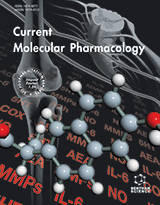Abstract
Estrogens are hormones that modulate a diverse array of effects during development and adulthood. The effects of estrogen are mediated by two estrogen receptor (ER) isotypes, ERa and ERa, which classically function as transcription factors to modulate specific target gene expression and in addition regulate a growing list of intracellular signaling cascades. These receptors share protein sequence homology and protein-motif organization but have distinct differences in their tissue distribution and binding affinities for their ligands. In the nervous system estrogen has been implicated to play a role in a number of processes which regulate synaptic plasticity including synaptogenesis and neurogenesis. The role for estrogen in a range of neurological and neuropsychiatric diseases is also becoming very apparent. Estrogen is able to regulate processes and behaviours relevant for both Alzheimers disease and schizophrenia and to modulate neuroendocrine and inflammatory processes important in neuroinflammation, anxiety and depressive disorders as well as chronic pain. We will consider the rationale for estrogen-based therapies for diseases of the nervous system. In particular we will highlight the molecular mechanisms and signal transduction pathways most likely underlying the effects of estrogen in the CNS.
Current Molecular Pharmacology
Title: Estrogen Receptor Neurobiology and its Potential for Translation into Broad Spectrum Therapeutics for CNS Disorders
Volume: 2
Author(s): Zoe A. Hughes, Feng Liu, Karen Marquis, Luis Muniz, Menelas N. Pangalos, Robert H. Ring, Garth T. Whiteside and Nicholas J. Brandon
Affiliation:
Abstract: Estrogens are hormones that modulate a diverse array of effects during development and adulthood. The effects of estrogen are mediated by two estrogen receptor (ER) isotypes, ERa and ERa, which classically function as transcription factors to modulate specific target gene expression and in addition regulate a growing list of intracellular signaling cascades. These receptors share protein sequence homology and protein-motif organization but have distinct differences in their tissue distribution and binding affinities for their ligands. In the nervous system estrogen has been implicated to play a role in a number of processes which regulate synaptic plasticity including synaptogenesis and neurogenesis. The role for estrogen in a range of neurological and neuropsychiatric diseases is also becoming very apparent. Estrogen is able to regulate processes and behaviours relevant for both Alzheimers disease and schizophrenia and to modulate neuroendocrine and inflammatory processes important in neuroinflammation, anxiety and depressive disorders as well as chronic pain. We will consider the rationale for estrogen-based therapies for diseases of the nervous system. In particular we will highlight the molecular mechanisms and signal transduction pathways most likely underlying the effects of estrogen in the CNS.
Export Options
About this article
Cite this article as:
Hughes A. Zoe, Liu Feng, Marquis Karen, Muniz Luis, Pangalos N. Menelas, Ring H. Robert, Whiteside T. Garth and Brandon J. Nicholas, Estrogen Receptor Neurobiology and its Potential for Translation into Broad Spectrum Therapeutics for CNS Disorders, Current Molecular Pharmacology 2009; 2 (3) . https://dx.doi.org/10.2174/1874467210902030215
| DOI https://dx.doi.org/10.2174/1874467210902030215 |
Print ISSN 1874-4672 |
| Publisher Name Bentham Science Publisher |
Online ISSN 1874-4702 |
 27
27
- Author Guidelines
- Bentham Author Support Services (BASS)
- Graphical Abstracts
- Fabricating and Stating False Information
- Research Misconduct
- Post Publication Discussions and Corrections
- Publishing Ethics and Rectitude
- Increase Visibility of Your Article
- Archiving Policies
- Peer Review Workflow
- Order Your Article Before Print
- Promote Your Article
- Manuscript Transfer Facility
- Editorial Policies
- Allegations from Whistleblowers
- Announcements
Related Articles
-
Corticotropin Releasing Factor (CRF) Receptor Signaling in the Central Nervous System: New Molecular Targets
CNS & Neurological Disorders - Drug Targets Drugs Used to Treat Parkinsons Disease, Present Status and Future Directions
CNS & Neurological Disorders - Drug Targets Patenting Penicillium Strains
Recent Patents on Biotechnology Inhibitors of the Ubiquitin-Proteasome System and the Cell Death Machinery: How Many Pathways are Activated?
Current Molecular Pharmacology Interaction Between Estrogen Receptor Alpha and Insulin/IGF Signaling in Breast Cancer
Current Cancer Drug Targets Src Family Kinases: Potential Targets for the Treatment of Human Cancer and Leukemia
Current Pharmaceutical Design Cancer Stem Cells Switch on Tumor Neovascularization
Current Molecular Medicine Defensins and Other Biocidal Proteins from Bean Seeds with Medicinal Activities
Current Medicinal Chemistry Beyond Cox-Inhibition: ‘Side-Effects’ of Ibuprofen on Neoplastic Development and Progression
Current Pharmaceutical Design Resveratrol and Cancer: Chemoprevention, Apoptosis, and Chemoimmunosensitizing Activities
Current Medicinal Chemistry - Anti-Cancer Agents The Pro-Apoptotic Substance Thapsigargin Selectively Stimulates Re-Growth of Brain Capillaries
Current Neurovascular Research Incorporation of Anti-angiogenic Therapies in the Treatment of Epithelial Ovarian Cancer: Current Perspectives and Future Directions
Current Angiogenesis (Discontinued) Targeting Cancer Stem Cells: Promises and Challenges
Anti-Cancer Agents in Medicinal Chemistry Neurodegenerative Pathways in Alzheimer’s Disease: A Review
Current Neuropharmacology Biological Activity and Physicochemical Properties of Dipeptidyl Nitrile Derivatives Against Pancreatic Ductal Adenocarcinoma Cells
Anti-Cancer Agents in Medicinal Chemistry Preparation and Characterization of Methylene blue Nanoparticles for Alzheimer's Disease and Other Tauopathies
Current Drug Delivery Role of Protein Conformational Dynamics and DNA Integrity in Relevance to Neuronal Cell Death in Neurodegeneration
Current Alzheimer Research Palmitoylethanolamide in Homeostatic and Traumatic Central Nervous System Injuries
CNS & Neurological Disorders - Drug Targets Editorial (Hot Topic: Innovative Approaches for the Management of Pediatric Malignancies)
Current Medicinal Chemistry Innate and Adaptive Immune Responses in Allergic Contact Dermatitis and Autoimmune Skin Diseases
Inflammation & Allergy - Drug Targets (Discontinued)


























